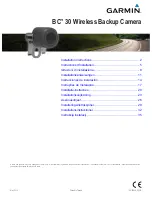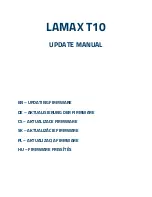
No.18S075-00
18/48
STC-OSB250CL
Product Specifications
and User’s Guide
8.2
Pulse width trigger mode
The camera exposure starts by trigger signal.
In this trigger mode with positive trigger polarity, camera exposure starts at rising edge of trigger signal and stops
at falling edge of trigger signal. The exposure time is active pulse duration (high state) of trigger signal.
In this trigger mode with negative trigger polarity, camera exposure starts at falling edge of trigger signal and stops
at rising edge of trigger signal. The exposure time is active pulse duration (low state) of trigger signal.
The exposure start will be delay about 22.1
μseconds by filtering system on camera.
8.2.1
The exposure time with positive polarity
Exposure Time
Image Out
Trigger Signal
(Positive)
FVAL
* Note.1: The exposure time sets by active pulse duration of trigger signal.
There is no FVAL output without exposing by trigger signal.
* Note.2: When active pulse duration of trigger signal is shorter than 21
μseconds, trigger signal is discard
by filtering system on camera.
It is necessary to supply more than 21
μseconds active pulse duration of trigger signal to camera.
* Note.3: The trigger signal is discard when trigger signal supplies shorter than below minimum frame
interval time from previous supplied trigger signal.
Minimum frame interval:
10TAP, 85.00 MHz:
31.397 mseconds
10TAP, 66.11 MHz:
40.515 mseconds
8TAP, 85.00 MHz:
39.377 mseconds
8TAP, 66.11 MHz:
50.206 mseconds
* Note.3: The trigger signal is discard when trigger signal supplies shorter than below minimum horizontal
blanking period from falling edge of previous supplied trigger signal with positive polarity
Minimum vertical blanking period:
10TAP, 85.00 MHz:
250.88
μseconds
10TAP, 66.11 MHz:
266.24
μseconds
8TAP, 8bits, 85.00 MHz:
266.24
μseconds
8TAP, 8bits, 66.11 MHz:
286.72
μseconds
8TAP, 10bits, 85.00 MHz: 266.24
μseconds
8TAP, 10bits, 66.11 MHz: 286.72
μseconds
















































